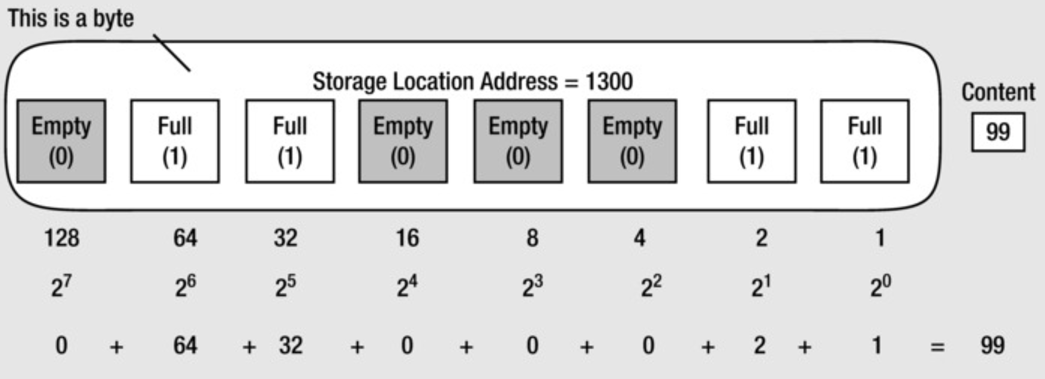In the below Go file we use bitwise operators to manipulate individual flags (on/off switches) in a single integer, where each bit position represents a different status.
In case you need a reminder of a what bit alignment and shifting look like:
Each status is assigned a unique power of 2 using bit shifting (1 << iota).
This ensures each flag only affects a single bit:
StatusActivehas the binary value0001(1 << 0== 1 in decimal).StatusAdminhas the binary value0010(1 << 1== 2 in decimal).StatusBannedhas the binary value0100(1 << 2== 4 in decimal).StatusVerifiedhas the binary value1000(1 << 3== 8 in decimal).
The following example combines two separate status flags:
userStatus |= StatusActive | StatusVerified
In binary, this results in 1001 (or 9 in decimal), which means both the "active" and "verified" flags are set.
The following example sets the "admin" bit without affecting the other bits, resulting in 1011 (11 in decimal):
userStatus |= StatusAdmin
Once userStatus has combined flags we can use the & operator to perform a bitwise AND operation, which means it compares each bit of two integers. For each bit position, if both bits are 1, the result at that position will be 1; otherwise, it will be 0.
So what happens when we compare userStatus&StatusAdmin != 0?
Well, StatusAdmin is a bit flag defined as 1 << 1, which results in 0010 in binary. This means that StatusAdmin occupies the second bit position in the binary representation of an integer. When we do userStatus&StatusAdmin, we're effectively "masking" all bits except for the one represented by StatusAdmin (this is known as bit masking).
When we perform userStatus&StatusAdmin, we get a result where only the bit corresponding to StatusAdmin remains (and is set to 1 if that bit was already set in userStatus). If this result is non-zero (!= 0), it means the StatusAdmin bit is set in userStatus. If it's zero, then StatusAdmin is not set in userStatus.
If we look at the code in bitwise.go we'll see userStatus is initially set to include StatusActive and StatusVerified, so userStatus is 1001 in binary (which is 9 in decimal). Remember StatusActive occupied the first bit position (0001), while StatusVerified occupied the fourth bit position (1000) so if setting both flags we get the combined 1001.
Next, we add the StatusAdmin flag with userStatus |= StatusAdmin, making userStatus now 1011 in binary (which is 11 in decimal). When we check if StatusAdmin is set using userStatus&StatusAdmin != 0 we get back 2 from userStatus&StatusAdmin (which is 0010 in binary) because we've bit masked the other bits that might have been turned on (if you recall, using & turns each bit to zero except for those bits that were 1 in both numbers being compared), in order to reveal whether the StatusAdmin bit was set on or not (i.e. 0 != 2 so we know this person is an admin).
